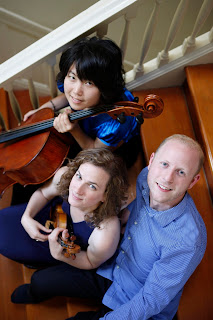Murphys, Ca -- After 16 days on the road, and about 2,400 miles, we have re-learned an old lesson.
Do not over-plan. The best things happen when you just let them happen.
That does not mean we did not know where we were heading, sort of. But stuff happens.
We knew we were going sailing with friends on San Francisco Bay. We knew we were going to see son Zack and grand-daughter Katie in their new home in Olympia. We knew we were heading for parts of British Columbia we had not seen before. And we knew we wanted a chance to sit down with old friends in Seattle before heading home. We did all that, and more.
Pictures are worth a thousand words, so here goes.
| First two days we were sailing on San Francisco Bay during America's Cup prelims |
We expected to have nice sailing days with friends, but didn't know we would get up close and personal with America's Cup Oracle boats and the 42-foot Red Bull competition. Then it was on to Olympia.
| Days 3, 4 and 5: Granddaughter Katie and son Zack hamming it up |
| Day 7: Arriving at Nanaimo BC by ferry from Tsawwassen |
We spent a night in Bellingham en route to Canada, crossed the border in plenty of time to catch the Tsawwassen ferry that takes folks and vehicles across to Vancouver Island. It is the only way to travel, and a delight. By chance we decided to head north on Vancouver Island and find a place to camp for a couple of days.
| Day 8: Pat studies the flora, or fauna, or something |
| Day 9: Beach at the Provincial Park where we camped. Pat with birds and beach. |
Our campsite was within walking distance of the beach. The place was clean and well run.
While there we heard a man talking about how beautiful the Pacific Rim Park area is on the western side of Vancouver, so we changed our mind about going further north and crossed the mountains to the West and landed in an area right out of a movie set.
| Day 10: Our first look: Ucluelet Yurt living requires minimal activity |
| Also on day 10, we took a hike near Ucluelet to see the coastal area |
| Day 11: Pat reads instructions on yurt living |
| Day 11: Tofino, as far as you can drive in northwest BC |
| In Tofino, north of our private beach, we found picturesque views, lots of great places to eat local seafood, offers of tours to see bears and whales, and an end-of-season fair/market where we bought photographs of wildlife. Then it was heading south again, aimed for Victoria -- one of the most beautiful cities in North America, and a taste of the English-styled Canada. |
|
Lunch! |
On to Victoria.
| Day 13: Victoria is a beautiful blend of old English stuff and First Nation art and atmosphere. |
In Victoria we managed to get slightly lost in traffic, but found our way to the harbor and the center of the city. We stayed here once before on a boat, a great memory. It is a great city, and the new Bateman Center in the old Steamship Building is host to some glorious nature art. We found it while looking for a bathroom. More serendipity. That afternoon we boarded the ferry for the trip back to the U.S.
| Day 13: Learning to park on a ferry from Victoria to Port Angeles can be a challenge. That's us on the left. |
Journalists never really retire, they just get together to talk about the good old days, how much fun we had, and how blessed we are by friendships.
| Day 14: The Pike Street Market in Seattle, one of our favorite spots. We are in front of the brass pig. |
| Day 14: Marsha gives me a lesson in eating smoked salmon, while Warren records the moment. |
| Day 14: A perfect end to to a perfect day: dinner on Puget Sound with old friends. |
Warren and Marsha, friends for 36 years, were the perfect hosts in Seattle. Years ago they interviewed us about having children: we had two and they had none at the time. They went home and had two beautiful daughters, both grown now. We've shared a lot through the years and miles, and we are better for having known them.
After two great days and nights, we loaded the car one last time and headed south on Interstate 5. Homeward bound. By the end of the first day we were very tired of driving, and looked for just anyplace to stay. We found this spot in Southern Oregon.
| Day 15: The last night on the road at Wolf Creek Inn, Oregon |
Our room was furnished with antiques, the dinner was superb, and we even ran into people with whom we share mutual friends. More serendipity.
| Day 16: Homeward bound with Shasta in sight |
I believe this is in Northern California, somewhere near Weed, and we headed home on the final day. If it turns out t be Mount Ranier, or Lassen, I am truly sorry, but I am a bit tired.
I've refilled the bird feeders, been to my favorite bakery for a morning treat, and we are back in touch with home.
Tonight we work -- a pleasure really -- at a Habitat for Humanity Fund Raiser.
Home is good.
-------------------------
To misquote someone: "It's not about the destination. It is about the journey."
And, one last sunset....
| Sunset at Wya Point on the Canadian coast |




